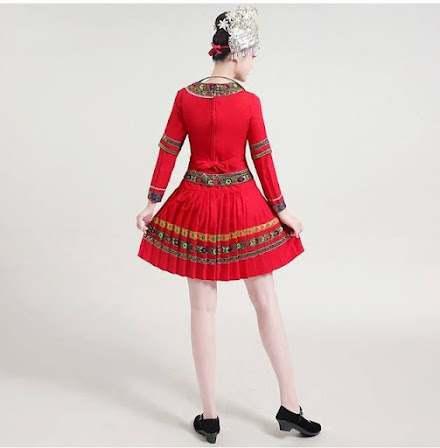Traditional Chinese Qing Dynasty Cheongsam Clothing: A Brief Overview
While the cheongsam is undeniably a quintessential piece of Chinese fashion, its origins trace back to the early 20th century, during the Republic of China period. It was influenced by both traditional Chinese clothing and Western fashion trends.
The Qing Dynasty, which ruled China from 1644 to 1912, had its own distinct fashion styles. While there are some similarities in terms of silhouette and fabric preferences, the cheongsam as we know it today is a product of a later era.
Qing Dynasty Fashion: A Brief Overview
To understand the context of the cheongsam's emergence, it's helpful to explore the fashion of the Qing Dynasty. The Manchu people, who established the Qing Dynasty, brought their own sartorial traditions to China.
- Manchu Influence: The Qing Dynasty introduced a new style of clothing, distinct from the Han Chinese fashion that had preceded it.
This included garments like the qipao (different from the later cheongsam), which was a long robe with wide sleeves. - Mandarin Collar: A hallmark of Qing Dynasty fashion was the mandarin collar, a standing collar that would later become a key element of the cheongsam.
- Elaborate Embroideries: Qing Dynasty clothing was often adorned with intricate embroideries, featuring motifs inspired by nature, mythology, and imperial symbolism.
- Rank and Status: Clothing in the Qing Dynasty was strictly regulated, with different styles and colors indicating social rank and official position.
The Birth of the Cheongsam
The cheongsam emerged in the early 20th century as a fusion of traditional Chinese elements Clothing and Western fashion influences.
- Western Inspiration: The cheongsam adopted a more fitted silhouette, inspired by Western dresses. It also incorporated elements like lace, beads, and sequins.
- Modern Woman: The cheongsam became a symbol of the modern Chinese woman.
It offered a sense of freedom and elegance, allowing women to move more freely than in traditional attire. - Evolution of Style: The cheongsam underwent various transformations throughout the 20th century. Different lengths, sleeve styles, and necklines emerged to suit different occasions and preferences.
The Cheongsam: A Timeless Icon
Despite its relatively recent origins, the cheongsam has become an enduring symbol of chinese qing dynasty clothing culture and femininity. Its elegant lines, intricate details, and versatility have captivated fashion enthusiasts worldwide.
- Materials: Silk remains the most popular fabric for cheongsams, but other materials like cotton, crepe, and brocade are also used.
- Embroidery and Ornamentation: Traditional Chinese embroidery techniques are often employed to embellish cheongsams, adding a touch of luxury and artistry.
- Modern Interpretations: While the classic cheongsam remains a timeless choice, designers continue to experiment with contemporary variations, incorporating modern cuts, fabrics, and prints.
The Cheongsam in Contemporary Culture
The cheongsam has transcended its origins as everyday attire and has become an iconic garment associated with special occasions, such as weddings, formal events, and cultural performances.
- Global Appeal: The cheongsam has gained popularity beyond China, with fashion designers and celebrities embracing its elegance and sophistication.
- Cultural Ambassador: The cheongsam has become a powerful symbol of Chinese culture, representing grace, femininity, and tradition.
- Preserving Heritage: Efforts are being made to preserve the traditional craftsmanship and techniques associated with cheongsam making, ensuring that this iconic garment continues to thrive for generations to come.
Conclusion
While the cheongsam is often mistakenly associated with the Qing Dynasty, its true origins lie in the early 20th century. It is a remarkable example of how traditional and modern influences can blend seamlessly to create a timeless fashion icon. The cheongsam's enduring popularity is a testament to its ability to capture the essence of Chinese culture while remaining relevant in contemporary fashion.
Our user-friendly online platform hanfusale.com provides a seamless shopping experience, allowing you to explore our extensive collection, browse through detailed product descriptions and imagery, and make secure purchases from the comfort of your own home. We offer worldwide shipping, ensuring that Hanfu enthusiasts from all corners of the globe can embrace this beautiful cultural heritage.

.jpg)



Comments
Post a Comment